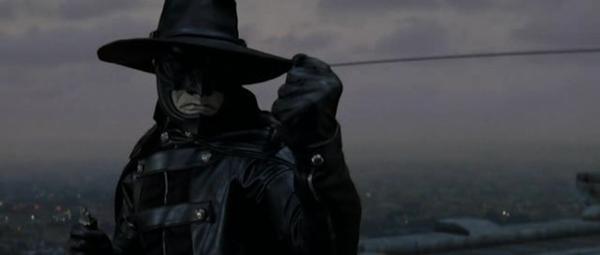Space Battleship Yamato
aka Space Battleship ヤマト aka Supesu Batorushippu Yamato

2010![]()
Written by Shimako Sato
Story by Yoshinobu Nishizaki
Directed by Takashi Yamazaki

With the remake trains heading at full speed down the tracks of the movie world, it is only natural that popular franchises like Space Battleship Yamato would become one of the train stations. Space Battleship Yamato (宇宙戦艦ヤマト) was an anime series begun in 1974, it features a continual story arc and was followed up by several sequel series and films and lawsuits. Released in the west as Star Blazers, the anime gained a faithful cult following overseas as well as home. I’ve never seen Star Blazers, though it’s popular enough I’ve become familiar with the concept. Earth under attack by powerful aliens, a lone ship sent on a desperate mission. And that ship just happens to be built in the hull of the infamous World War II battleship Yamato.

This reboot of Space Battleship Yamato takes some cues from the reboot of Battlestar Galactica. More than some cues. Okay, it’s almost a carbon copy of Battlestar Galactica. From the 9-11 inspired opening destruction of Earth’s fleet (which rings way more hollow and is an interesting look at 9-11 from a non-American country) to the characters with templates lifted wholesale (including gender swaps!) to the made up story of hope to inspire a journey across the galaxy, deja vu will deja vu your deja vu. Space Battleship Yamato owes almost its entire existence to Battlestar Galactica, which is odd considering it has a whole original canon to use.

The general concept of the original cartoon using the Yamato was a reference to the final mission of the battleship, which was generally seen as a brave but futile effort to defend Japan before the inevitable defeat. Yamato was seen as a metaphor for the Japanese Empire, double-downed by the name Yamato being a poetic name. Space Battleship Yamato borrows this line of thinking, even going so far as to spell it out to the audience. But the liberal borrowing of concepts and themes from Battlestar Galactica muddies the water. After the Yamato is launched, it becomes a series of episodes with the theme of sacrifice for the greater good. Susumu Kodai has a chip on his shoulder against Captain Okita, believing he abandoned his brother to die. Yuki Mori thinks Kodai leaving the military was abandoning his duty. Kodai violates orders to try to save crew members, endangering the entire ship, but later learns that you can’t avoid Kobayashi Maru forever and sometimes people have to die. Even the ending of the film works on this concept of sacrifice, from the cast thinning to the final actions of Kodai. Characters die, and the survivors will spend far too long thinking about the death in the middle of the action. Time is of the essence, people! These reactions are meant to emphasize the sacrifices, but are so overdone they become distracting. Oddly enough, this focus on duty and sacrifice above all else gives Space Battleship Yamato themes that mimic the thinking of the time of the real battleship Yamato.

The mixed messages cause Space Battleship Yamato to flounder around and lose the emotional punches it needed. I am not familiar enough with the original show to know if it was similarly muddled. The liberal borrowing from another source is also a big red mark against it. The visual effects are wonderful, especially considering the lower budget. It is a nice looking film. But looks are only skin deep, and Space Battleship Yamato is like one of those hollow chocolate bunnies. You know it should be filled with chocolate, but it just isn’t, and it’s not what you wanted.


|











